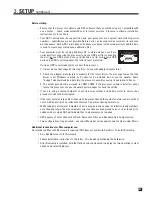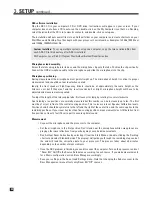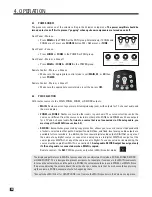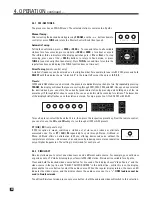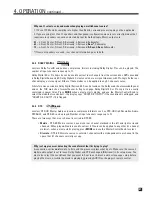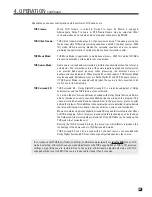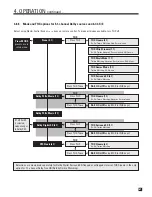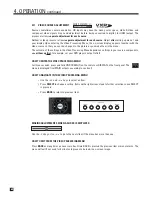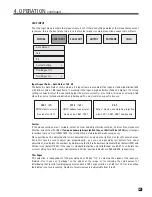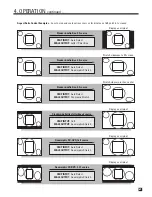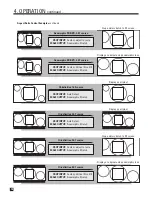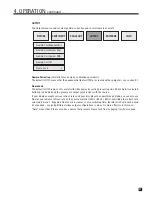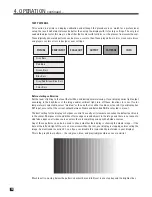
58
4.8.6
THX
THX is an exclusive set of standards and technologies established by the world-renowned film production
company Lucasfilm Ltd. THX grew from George Lucas’ desire to make your experience of the film
soundtrack, both in movie theaters and in your home theater, as faithful as possible to what the director
intended. Movie soundtracks are mixed in special theaters called dubbing stages and are designed to be
played in movie theaters with similar equipment and conditions. This soundtrack is often transferred to DVD
without adjustments for home theater. THX engineers developed patented technologies to accurately
translate the sound from the movie theater to the home, restoring proper tonal and spatial balance.
Each THX mode includes a combination of the following:
• Re-Equalization
– Restores the correct tonal balance for home playback. A film soundtrack may
sound bright when played in the home because film soundtracks are designed for large movie
theaters where acoustic properties are different. To enable or disable Re-EQ press
THX
twice to
display “THX RE-EQUALIZATION” then select On or Off with the Master Control Knob or
56
(up/down) on the remote control.
Re-EQ is also applicable when THX is Off –
this can be useful
where high-pitched noise leaked from a CRT monitor to the recording during production.
• Timbre Matching
– The ear changes our perception of sound depending on the direction it’s coming
from. Movie theatres use an array of surround speakers resulting in surround information from
many directions. In the home less surround speakers are used. Timbre Matching, which includes
Re-EQ, changes surround information so its tonal characteristic resembles that of the front
speakers. This ensures seamless panning between the front and surround speakers.
• Adaptive Decorrelation
– In a movie theatre, a large number of surround speakers help create an
enveloping surround sound experience, but in a home theatre there are usually only two speakers.
Unless you are using properly positioned dipoles, surround speakers can sound like headphones
that lack spaciousness and envelopment – they will also collapse into the closest speaker as you
move away from the middle seating position. Adaptive Decorrelation senses the presence of
identical surround channels (mono) and slightly changes one surround channel’s time and phase
relationship with respect to the other. This expands the listening position and creates – with only
two speakers – the same spacious surround experience found in a movie theatre. Adaptive
Decorrelation does not operate when the surround channels are different from one another.
•
ASA (Advanced Speaker Array)
– explained in section 3.4.
Summary of THX processing:
Re-EQ
de-emphasizes treble. May be turned on or off at any time after pressing
THX
twice.
Timbre Matching
matches the sound character of the surround channels to the front channels.
Adaptive Decorrelation
restores spaciousness when the source has one surround channel.
ASA
provides a wide rear soundstage.
4. OPERATION
continued …
Summary of Contents for Statement D2v
Page 1: ...STATEMENT D2v OPERATING MANUAL UPDATES www anthemAV com S O F T W A R E V E R S I O N 2 0 x...
Page 8: ......
Page 87: ...79...
Page 100: ...THE BIG PICTURE FRONT PANEL...
Page 101: ...THE BIG PICTURE REAR PANEL...




